Beginning of the Finish
Gypsum Mineral Pore Filler
A world-class luthier in Germany (Roger Hargraves) shared this publicly…he accomplished it a little differently, in that he prepared his gypsum by hydrating plaster of paris very thoroughly, and using the carefully washed fines as his filler. I used the finely-ground gypsum available in gardening stores, stirred it into a suspension of strong coffee and ethanol (only there to keep the coffee/gypsum mix from developing mold, sitting on the shelf), and brushed and rubbed the mixture into the wood of the violin. Then I rubbed it back off, using a soft rag, getting as much as possible back off while it is still wet. The goal is that the fine particles of gypsum will plug the pores of the wood, so that the subsequent coats of varnish will not penetrate into the wood. I can’t say whether my method works anything like that of Mr. Hargraves. Perhaps someday I will try something else. But for now, that is what I do.
First, I removed the fingerboard, and did some miniscule corrections to the scroll, pegbox and button. Then I painted on the stirred-up suspension, coating everything except the handle area of the neck.
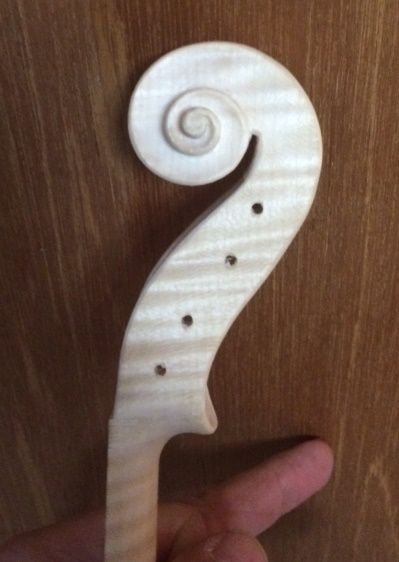
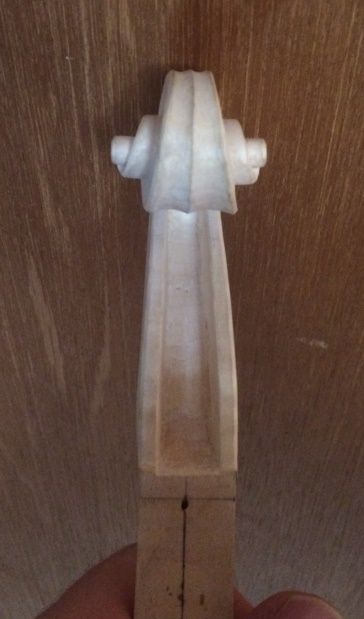
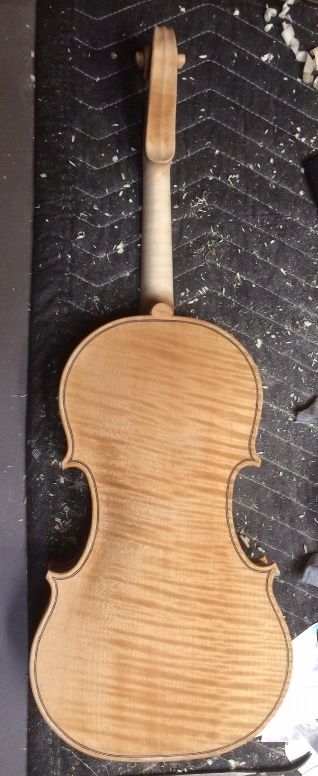
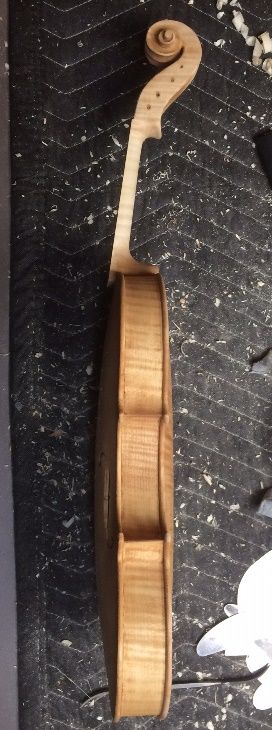
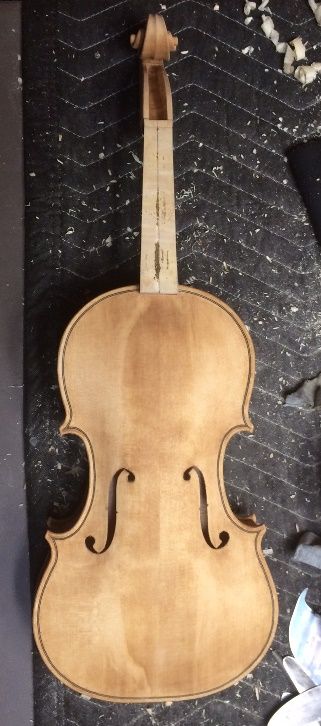
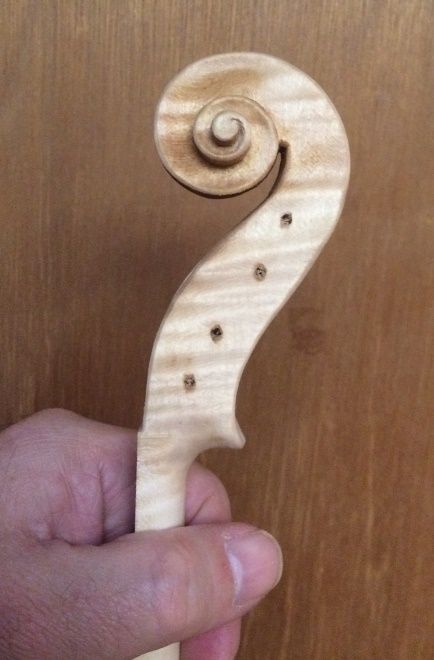
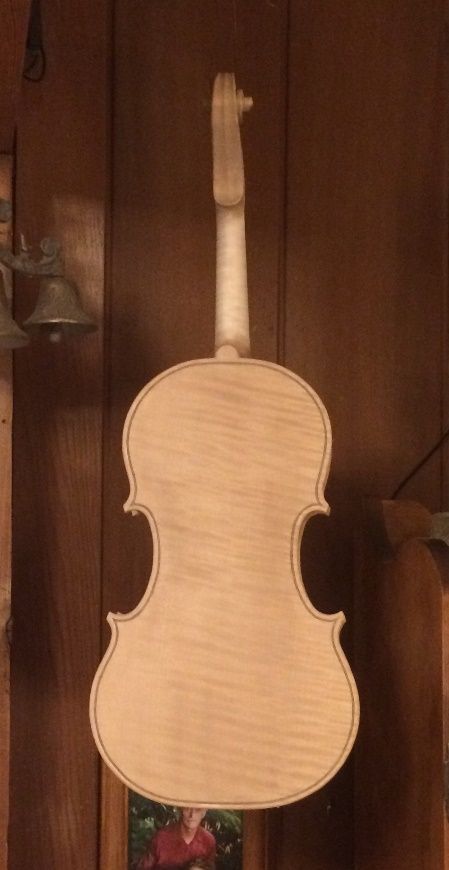
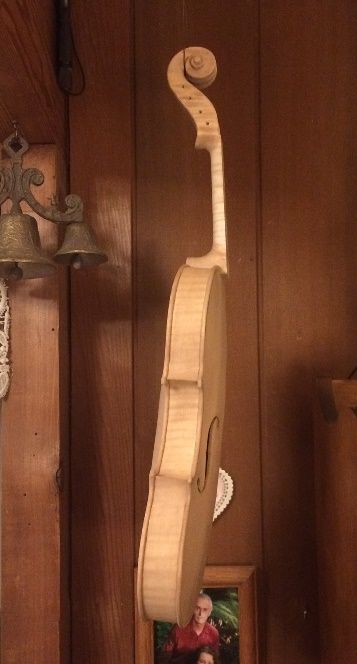

I’m not certain why the spruce acted the way it did. I had wetted it with coffee before, without any mishaps. I am wondering whether I somehow compressed certain areas, in re-scraping, and they responded differently. I can’t be sure. But I have enough experience with varnish that I am not worried about the outcome. (After all, it was a very old, worn instrument I was copying.) 🙂
What’s next?
So…the next step will be to rub off all the excess dry gypsum, and clean up any rough areas where the grain may have raised again. (I’m not really expecting any, but I will be looking for them. Then, tomorrow evening, I hope to apply the sealer that will lock in the gypsum. It is always a little astonishing to me, to see the grain and flame suddenly “pop” out and become very visible. The gypsum becomes completely transparent, and is never evident again.
Thanks for looking.

 Follow
Follow
